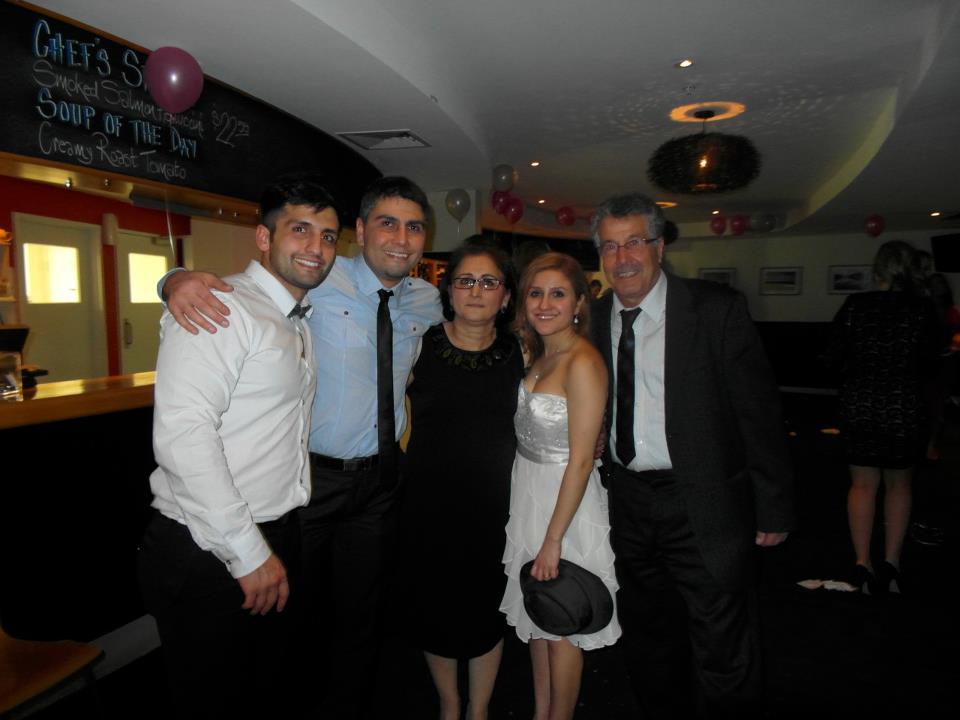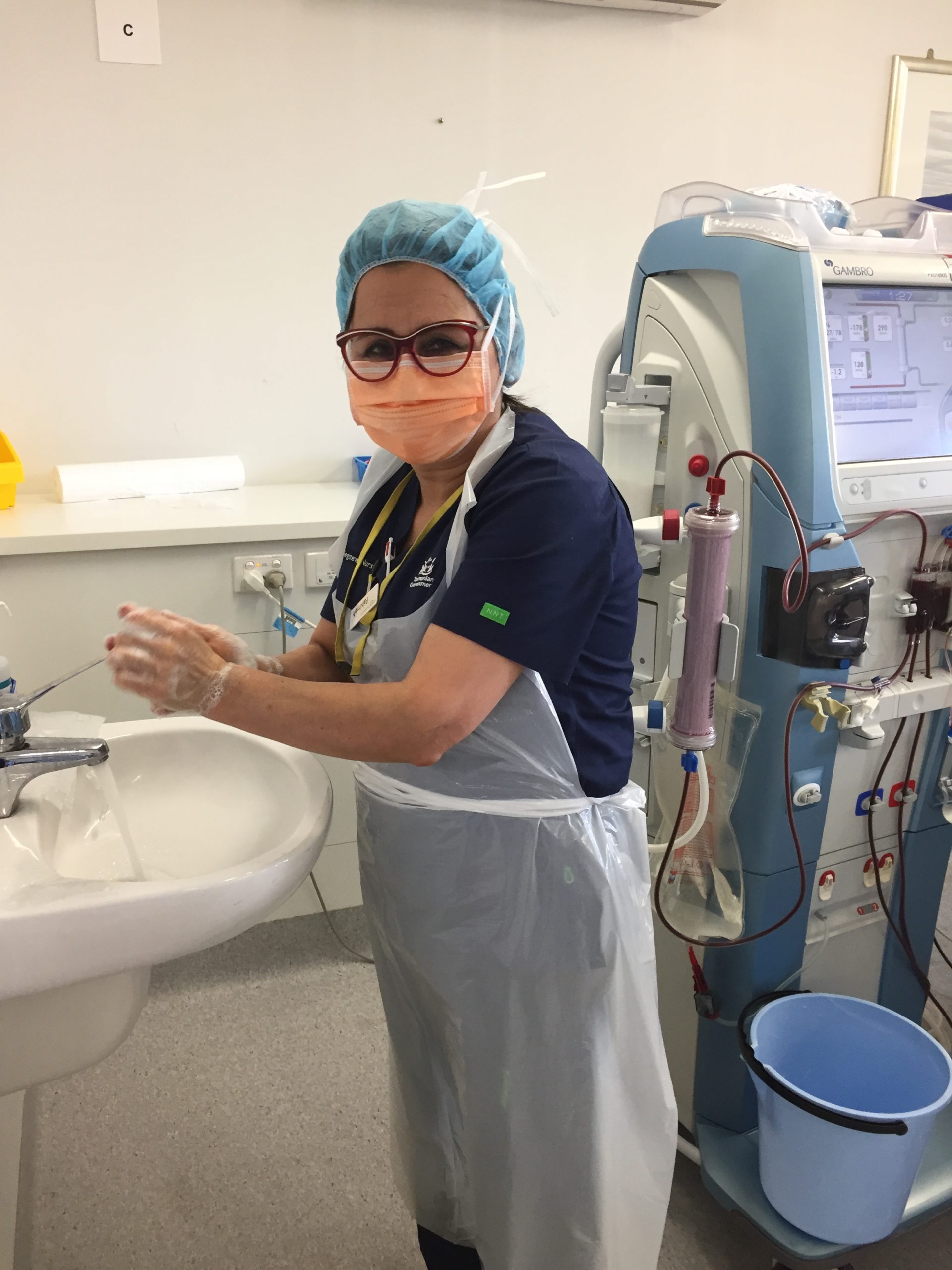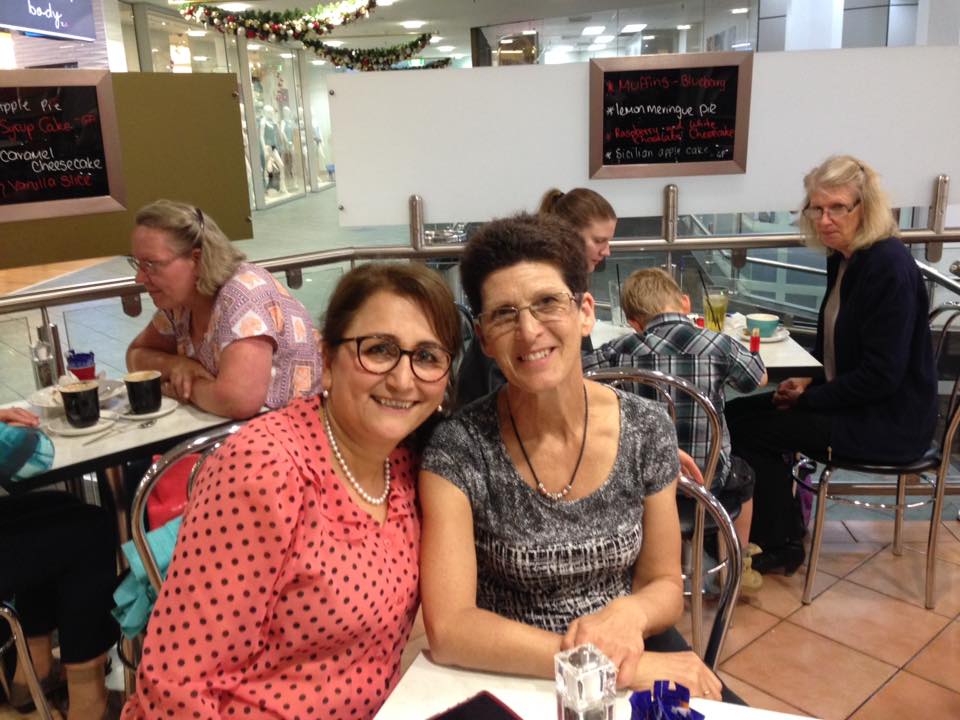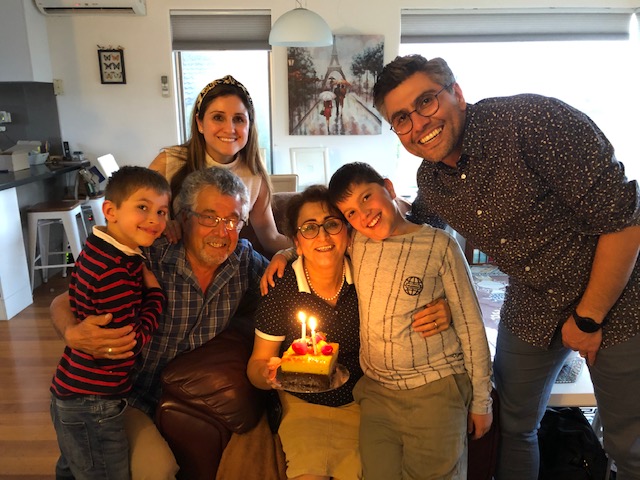Fahimeh has been in remission for seven years
Fahimeh Taheri’s amyloidosis was picked up very early. She can pinpoint the time when she started developing the disease. It was around February 2012, when she was 54.

She knows that because, as a registered nurse, she sometimes checked her own urine, and there was no presence of protein in the last test she did, two months before a kidney biopsy showed she had amyloid in her kidney. [Amyloid can harm the kidneys’ filtering system, causing protein to leak from your blood into your urine.]
Fahimeh, 62, of Hobart, has been in remission for seven years – since July 2013 – and believes her early diagnosis was important to achieving her disease-free outcome.
She and her family migrated to Australia from Iran in 1998, and Fahimeh, who had been a teacher, changed her career to nursing. She studied and completed her Bachelor of Nursing and had just started a new job at a hospital dialysis unit when she was diagnosed with AL amyloidosis in April 2012.

Fahimeh’s diagnosis and initial treatment
The mother of three started feeling very tired, and by 9pm she was drowsy and sleepy, which was unusual given she was used to staying up well into the night reading. She also noticed a change in the shape of her nails.
“I was sure something was wrong with my body,” said Fahimeh, so she went to see a GP.
The doctor ordered blood tests to check her iron and asked Fahimeh for a urine sample which was tested on the spot. It showed the presence of protein.
“I told the doctor, that’s very strange. I’d never had protein in my urine,” said Fahimeh.
“Then the blood test showed no iron and I was sent to a nephrologist who did the kidney biopsy, and then I had a bone marrow biopsy as well, and that showed I had AL amyloidosis plus smouldering myeloma.”
Her initial reaction was disbelief.
“At first, I was like – it’s wrong, the tests are wrong. I have always been a healthy, happy person and very strong… what happened to me?”
“My response was – it’s a bad dream. I wanted to sleep and get up, open my eyes and say, ‘it was a bad dream’. But it wasn’t.
“My haematologist was so positive explaining the treatments, and at the same time he told me there is no cure!
“I had never heard of amyloidosis, so straight away I went to the internet and read that from diagnosis to finish is six months, maybe a year. It was so depressing.
“When I told my nephrologist this, he said not to look at the internet, and that the treatment had changed from years ago.”
Under the eyes of a nephrologist and haematologist, Fahimeh started chemotherapy in
September 2012 with a course of cyclophosphamide and dexamethasone. Next, she was treated with melphalan.
Then Fahimeh had injections to stimulate her bone marrow to produce stem cells which were then harvested, and in November she had an autologous stem cell transplant.
She went home to recover but a week after the transplant Fahimeh developed a temperature and was admitted to hospital. For the next 10 days she was confined to an isolation room and treated with blood transfusions and antibiotics.
“I was very, very sick. My platelets and haemoglobin were very low. I couldn’t even walk,” said Fahimeh.
She returned home “to a very clean and disinfected area of the house”.
“We didn’t let anybody come to our house,” said Fahimeh.
Three months later when she went to see her haematologist with her husband, Mohammad and daughter, Hoda who is a GP, Fahimeh received the shocking news. The transplant hadn’t worked.
“I burst into tears and I told my daughter, ‘the world is finished for me, that’s it’.
“But the doctor was very optimistic. There were different treatments to try that people were responding well to.”
A new treatment and remission
Fahimeh started the new treatment on Christmas Eve – bortezomib (Velcade®) combined with cyclophosphamide and dexamethasone.
“My results showed that I had AL amyloidosis plus smouldering myeloma, so my haematologist was able to access bortezomib. At that time, it was only available for people with myeloma.”
Fahimeh was on this treatment regimen for six months, until mid-2013. During this time, she halved her work schedule to two days a week as she was exhausted and didn’t feel very well for two or three days after each treatment.
“My body responded perfectly,” said Fahimeh.
Within a year her kidney function had returned to normal, with no presence of protein in her urine, and she is thankful not to be affected by peripheral neuropathy as a side-effect, but when her hair grew back, it was extremely curly!
Fahimeh hasn’t had any further treatment for amyloidosis since but she continues to have three-monthly blood tests, at her request “because I want to make sure everything is okay”, and six-monthly appointments with her haematologist along with a urine test.
Thankful to be in remission
She shows no evidence of either amyloidosis or smouldering myeloma being active.
“At the moment I don’t have anything,” said Fahimeh.
“I don’t know if it will come back. I try not to think about it.
“I don’t know what is going to be in the future, but every day is a bonus for me. Every day I thank god for being healed and in remission for seven years.”
There has been one not-so-small hiccup over the years – heart surgery.
In 2018, Fahimeh noticed she was short of breath when walking, which she put down to having asthma and not using her inhaler every day. Her GP referred her to a cardiologist, and she had a series of tests.
“Then the sad thing – I had to have triple bypass surgery,” said Fahimeh.
“Three months after, I went back to work and back to normal life!”
Leukaemia Foundation support
Fahimeh received support from the Leukaemia Foundation soon after her diagnosis with amyloidosis.
“They are such a great support. I really appreciate their help, their support and everything,” she said.
“They were so nice to us. When I started treatment and twice when I was in hospital, they gave us a card, so my husband didn’t have to pay for parking. It was great he could stay with me all day. They helped with petrol vouchers too.”
The Leukaemia Foundation also connected Fahimeh with a fellow amyloidosis patient, long-term survivor and retired researcher, Carole Bartlett, who lives in Western Australia.
“She was diagnosed a year before me and is still in remission.

“Carole was a great help to me, to understand I am not alone, there are other people with AL amyloidosis.
“She was so positive. We are still in contact and when she came to Hobart, she came to our place for dinner.”
Fahimeh has travelled to Melbourne many times to attend the Leukaemia Foundation’s annual patient conference.
“I went with my daughter, to gather information, to find out about the new treatments. It brought me hope and happiness feeling you’re not alone.”
Life looks different to Fahimeh now
“My life has changed. Every single day, I thank god I am still alive and it’s such a beautiful day’.
“Every morning when I get up, I go outside. I appreciate that the weather is sunny and I appreciate when it is raining.
“Life is completely different to my eyes than before. Spring is different, summer is different. It looks like I am born again.”
Helping the dialysis patients at work
Fahimeh loves her job and has no plans to retire.
“I am 62 but I feel I’m 42. I don’t think about my age. I think age is just a number,” she said.
Not only does she share her own experiences with a life-threatening disease, to help support and encourage the dialysis patients she sees every day at work, she even does a belly dance for them!
Sharing a joke or a story inevitably results in the sound of a patient’s laughter coming from any room Fahimeh is in.
“They see how positive I am, and they tell me this makes a difference and is life-changing for them.
Fahimeh’s advice to others with amyloidosis
Firstly, unless you are accessing a recommended, trusted website, Fahimeh says, “don’t look at the internet,” because a lot of the information there is old.
“Treatment changes every day and is getting better.
“And don’t think it [an amyloidosis diagnosis] is the end of your life. It’s not. There’s lots of good treatment.
“Being positive makes a big difference. Talk to yourself. Say, ‘I am a fighter’ and ‘this is not going to kill me’.
“Being negative and down, pulls your immune system down as well. A positive attitude builds up your immune system.”

Fahimeh also suggests having a hobby. She loves cooking and reading medical books and doing research.
“I remember, after chemotherapy, I couldn’t concentrate on reading. I’d read a page, then I had to go back and read it again. That was very frustrating.
“I tried getting up and doing a breathing exercise. After five minutes, I’d sit and read that page again. Don’t give up. It’s very important not to give up.
“Exercise is very important for everybody,” said Fahimeh who jumps on her treadmill for at least 30 minutes each day.
“And if you can’t do half an hour, break it up into 10 minutes three times a day.”
Finally, Fahimeh says living with a chronic disease or illness is a big challenge.
“It is normal to grieve and to be sad. Sometimes, I have to tell myself there are people worse than me.
“If you are positive, it brings happiness to your life.
“I try to have a very positive attitude and every day I think about the research to find better treatments for this disease and maybe one day they will find a cure.”
Last updated on February 23rd, 2022
Developed by the Leukaemia Foundation in consultation with people living with a blood cancer, Leukaemia Foundation support staff, haematology nursing staff and/or Australian clinical haematologists. This content is provided for information purposes only and we urge you to always seek advice from a registered health care professional for diagnosis, treatment and answers to your medical questions, including the suitability of a particular therapy, service, product or treatment in your circumstances. The Leukaemia Foundation shall not bear any liability for any person relying on the materials contained on this website.